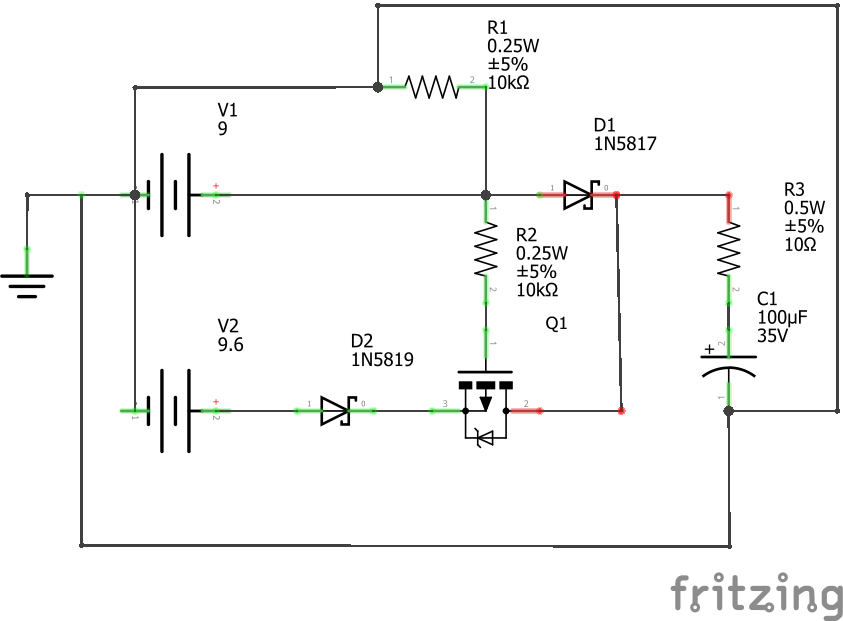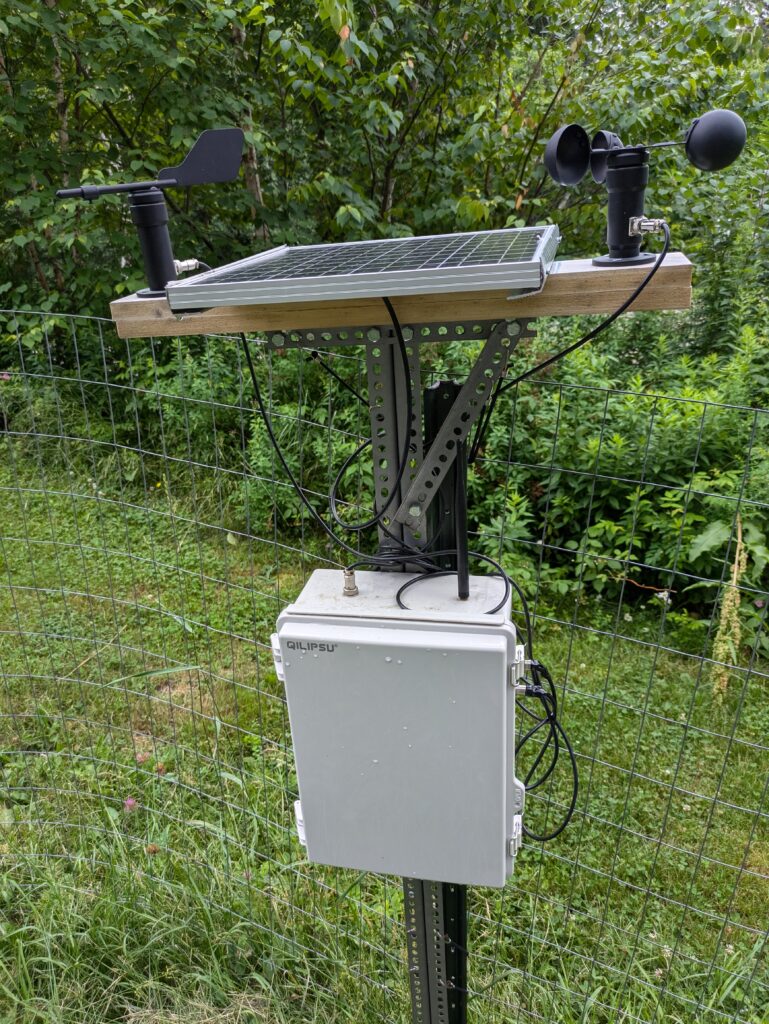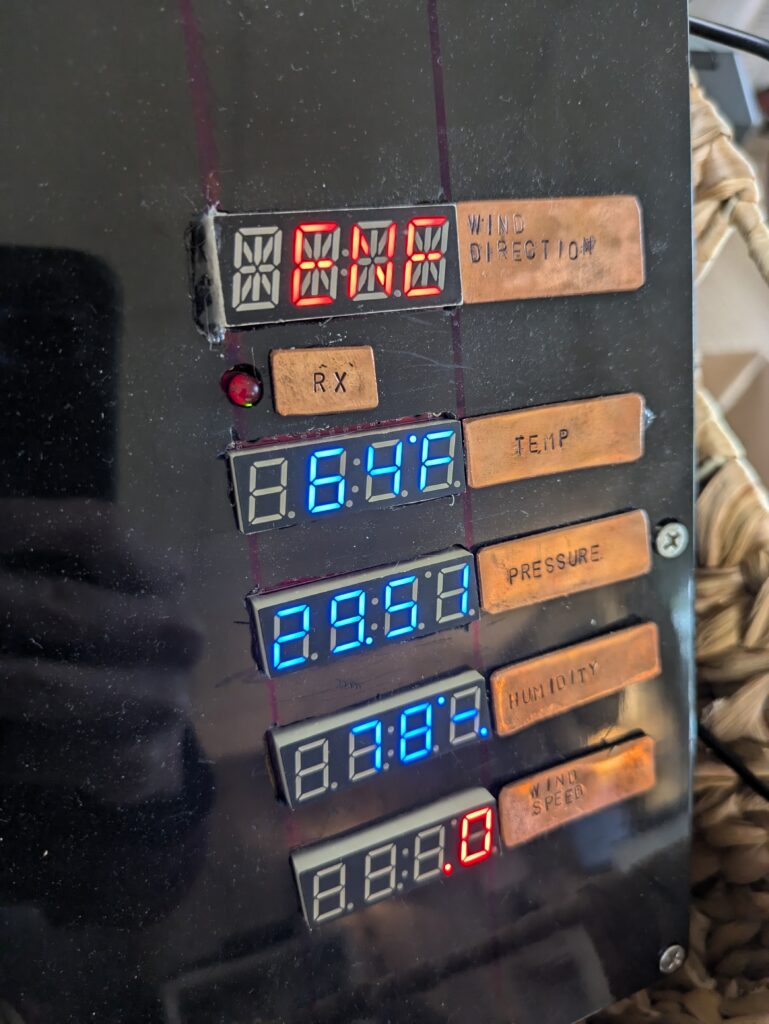A device designed to switch between a bank of alkaline batteries and a 9v power adapter. My weather receiver device has a battery and a power adapter. I currently have a SPDT switch to cut between the adapter and battery power, but this causes the arduino to turn off briefly. Here I designed a circuit to cut between the two automatically using a p-channel MOSFET. It effectively is a battery isolator that cuts the battery off entirely when power is on.
I initially thought using schottky diodes would do the trick, but that arrangement has the disadvantage that any voltage difference between the battery and the DC source would cause the current to flow from the battery through the load. Since 9v batteries are usually at 9.6 volts, this means they’d drain to roughly 9v over time to match the power source. The diodes aren’t perfect, and a little current leaks through below their forward voltage. Will update when the circuit is tested. I’m aiming for a capacity under 1A to run an arduino and some accessories.


